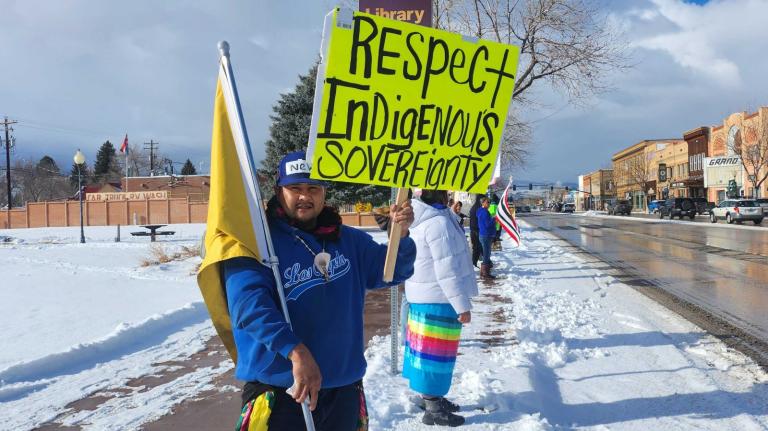The New York Times editorial board had a nice piece this Sunday condemning GOP obscurantism on climate change. It reminds me that I want to double down on my contention that telling the truth about climate change will prove to be good long-term politics for the left. My argument is fairly simple: the circumstances that have yielded the current boom in climate denialism are idiosyncratic and won’t last. Right now all the intensity is on the denialist side, but substantial historical forces are pushing in the other direction.
Along these lines, it’s worth digging into the new study from the Yale Project on Climate Change Communication. At the NYT, Felicity Barringer highlights the ignorance it reveals — for instance, over two-thirds think aerosol sprays contribute to climate change (er, no, that’s the ozone layer you’re thinking about). Most people accept the basic fact that the climate is changing but know very little about the nature and causes of those changes.
On the somewhat brighter side, most people know they don’t know much and want to know more. And they trust scientists, more than anyone else, to provide them good information:
Americans’ most trusted sources of information about global warming are the National Oceanic and Atmospheric Administration (NOAA) (78%), the National Science Foundation (74%), scientists (72%), science programs on television (72%), natural history museums (73%), and science museums (72%).
(In other words, the relentless right-wing campaign to slander climate scientists hasn’t worked, “Climategate” hoo-ha aside.)
This is a very different dynamic than what you usually hear about in green media, where folks are positively obsessed with climate “skeptics” and the nefarious lies they tell on their blogs. But there are over 310 million people in America. Only a handful of those watch cable news (Beck peaked at 3.4 million), a much smaller handful read right-wing blogs, and a smaller handful still are rehearsed in the familiar “skeptic” talking points. Sure, this small band of outright fabulists makes a ton of noise on the interwebs, so it’s easy to overstate their numbers, but there just aren’t that many of them in the grand scheme of things.
Insofar as lack of public engagement is the problem, the cause is not misinformation, it’s the lack of affective information — information that is meaningful, that speaks to core fears and aspirations. The main problem is apathy. People just don’t care much. Green journos and pundits tend to wildly overestimate the significance of accurate knowledge and wildly underestimate the significance of emotional resonance.
Those trying to spread the word on climate change have the advantage in numbers. The majority of Americans accept that climate change is happening and almost three-quarters get a passing grade — C or above — on Yale’s scale of knowledge. Where the denialists have the overwhelming advantage is in intensity. As rejection of climate science and climate solutions has become an ideological litmus test on the right, millions of Republicans have come to believe that climate science is not just incorrect but a hoax meant to further U.N. world government. They are pissed.
Very few of those who correctly believe that climate change is happening are pissed about it. More like “concerned,” the way people are concerned about homelessness or poverty in Africa, like, y’know, somebody (else) should really do something about that. Few write letters to legislators or hassle them about it in town halls. Almost no one will change their vote over it. No legislator stands to be primaried or driven from office over it.
In other words, all the intensity, and thus all the political risk, is on one side. For the political landscape to change in coming years, what’s needed is not a massive education campaign — though it certainly couldn’t hurt! — but a shift in the balance of intensity. The question is how to reduce the intensity of denialists and increase the intensity of climate hawks.
I’m sure there are tons of things that could be done to accelerate those processes, some of which I’ll be discussing soon, but it’s worth noting both trends seem all but inevitable. Denialism is of a piece with the Tea Party freak-out, and just like reactionary freak-outs past, it will burn itself out as the economy improves. At the same time, young people are much more likely to feel passionately about clean energy and climate change mitigation. They’ve been learning about this stuff all their lives and they take it for granted. As they take over, the balance will shift.
Admittedly, these trends are medium- to long-term and of no comfort to a candidate who’s getting killed over cap-and-trade today. Still, it’s not wise to project the peculiar circumstances of the last two years into the indefinite future. The backlash against cap-and-trade — not even the policy, the grotesque caricature of it painted by its opponents — won’t hold back the low-carbon tide forever. Voters already love clean energy; they think fossil fuels should be subsidized less and renewables more. The EPA is moving, states are moving, cities are moving, businesses are moving. As such efforts touch more and more lives, the issue will become less abstract. As people integrate clean energy into their worldview, intensity against climate science will fade and intensity behind reforms will increase.
Y’all know I’m not exactly a glass-half-full kind of guy, but I really think the death of the climate bill is a “darkest before the dawn” kind of moment. The larger forces of history are moving in the right direction. There’s only so long America’s peculiar, dysfunctional political system can resist.



